Public vs Private Blockchains

In the evolving landscape of blockchain technology, one of the most fundamental distinctions is between public and private blockchains. This distinction affects everything from who can participate in the network to how transactions are verified and what level of transparency exists. Understanding these differences is crucial for organizations and individuals considering blockchain adoption. This guide explores the key characteristics, advantages, limitations, and use cases of both public and private blockchains.
Understanding the Spectrum of Blockchain Networks
Public Blockchains

Private Blockchains

Consortium/Federated Blockchains

Key Characteristics of Public Blockchains
Open Participation
- Permissionless Access: Anyone can download the software and join the network
- Global Distribution: Nodes typically span worldwide geographic locations
- Censorship Resistance: No central authority can prevent participation
- Community-Driven Development: Protocol changes require broad consensus
- Open-Source Code: Transparency in how the network operates
- No Central Authority: No single entity controls the network
Security Model
- Economic Incentives: Miners/validators are rewarded with native tokens
- Cryptographic Verification: Strong cryptography secures transactions
- Attack Resistance: High cost to attack due to distributed nature and economic design
Transparency
- Public Ledger: All transactions are visible to anyone
- Auditability: Complete transaction history can be verified by any participant
- Pseudonymity: While transactions are public, identities can be pseudonymous
Key Characteristics of Private Blockchains
Restricted Participation
Centralized or Consortium Governance
- Organizational Control: One or more organizations govern the network
- Streamlined Decision-Making: Changes can be implemented more quickly
- Defined Roles: Clear separation between administrators and users
Alternative Security Model
- Reputation and Legal Agreements: Security often relies on legal frameworks
- Simplified Consensus: Less computationally intensive mechanisms can be used
- Concentrated Validation: Fewer nodes validate transactions
Customized Privacy
- Confidential Transactions: Data can be hidden from select participants
- Access Controls: Fine-grained permissions for different network members
- Selective Transparency: Information sharing on a need-to-know basis
Comparing Public and Private Blockchains
Performance and Scalability
Public Blockchains:
- Often have lower transaction throughput
- Experience higher latency (slower confirmation times)
- Face scalability challenges due to decentralization requirements
Private Blockchains:
- Can achieve higher transaction throughput
- Typically have faster confirmation times
- Can be optimized for specific performance requirements
Security Trade-offs
Public Blockchains:
- Security through access control and known participants
- Vulnerability to internal collusion
- Potentially greater legal recourse if participants violate rules
Private Blockchains:
- Security through mass participation and economic incentives
- Higher resistance to censorship and tampering
- Vulnerability to 51% attacks (though increasingly difficult with network growth)
Cost Considerations
Public Blockchains:
- Lower or no transaction fees
- Higher infrastructure setup and maintenance costs
- More predictable operational expenses
Private Blockchains:
- Transaction fees (often variable and sometimes high)
- No infrastructure setup costs for participants
- Shared maintenance costs across the network
Regulatory Compliance
Public Blockchains:
- Challenging regulatory compliance due to global, permissionless nature
- Difficulty implementing “Know Your Customer” (KYC) requirements
- Limited ability to reverse transactions or implement oversight
Private Blockchains:
- Can be designed to meet specific regulatory requirements
- Easier implementation of identity verification and KYC
- Ability to grant regulator access when required
Use Cases for Public Blockchains
Cryptocurrencies and Digital Assets
- Digital Money: Peer-to-peer electronic cash systems (Bitcoin)
- Store of Value: Digital alternatives to gold and other value stores
- Decentralized Finance (DeFi): Open financial applications without intermediaries
Global, Censorship-Resistant Applications
- Freedom of Speech Platforms: Uncensorable content sharing
- Borderless Applications: Services that operate regardless of jurisdiction
- Protection Against Deplatforming: Systems resistant to service denial
Open Digital Marketplaces
- NFT Marketplaces: Trading digital collectibles and art
- Decentralized Exchanges: Peer-to-peer trading of digital assets
- Open E-commerce: Direct buyer-seller interaction without platform control
Public Good Networks
- Digital Identity Systems: Self-sovereign identity verification
- Public Record-Keeping: Land registry and other public records
- Transparent Governance: Voting systems and public resource allocation
Use Cases for Private Blockchains
Financial Services
- Interbank Settlement: Efficient transfer of value between institutions
- Trade Finance: Streamlining letters of credit and other trade documents
- Insurance Claims Processing: Automating claims verification and payment
Supply Chain Management
- Product Traceability: Tracking goods from manufacture to delivery
- Partner Collaboration: Sharing data across business partners
- Compliance Documentation: Verifying regulatory compliance
Healthcare
- Medical Records: Secure sharing of patient information
- Pharmaceutical Supply Chain: Tracking medication from production to patient
- Clinical Trial Management: Ensuring data integrity in research
Enterprise Asset Management
- Intellectual Property Tracking: Managing patents and copyrights
- Internal Resource Allocation: Tracking company assets and usage
- Corporate Governance: Shareholder voting and record-keeping
Hybrid Approaches and Interoperability
Sidechains and Layer 2 Solutions
- Public Mainchain with Private Sidechains: Using public blockchains for settlement while processing transactions on private networks
- Anchoring: Periodically recording private blockchain state to public chains for security
Enterprise Integration with Public Networks
- Tokenization Bridges: Connecting enterprise systems to public blockchain tokens
- Oracle Services: Feeding enterprise data to public blockchain applications
- Hybrid dApps: Applications that leverage both private and public infrastructure
Emerging Standards
- Interoperability Protocols: Standards allowing different blockchains to communicate
- Cross-Chain Technology: Facilitating asset transfers between different blockchain types
- Universal Identity Solutions: Identity systems that work across public and private networks
Making the Right Choice
Key Questions to Ask
- Who needs to participate in the network? Open community or defined group?
- What level of transparency is required? Full transparency or controlled visibility?
- What performance requirements exist? Transaction speed, volume, and cost?
- What regulatory constraints apply? Compliance requirements and legal considerations?
- How critical is decentralization? Need for censorship resistance and elimination of central control?
Decision Framework
- Choose Public when maximum decentralization, censorship resistance, and open participation are priorities
- Choose Private when control, privacy, performance, and known participants are more important
- Consider Hybrid approaches when benefits of both are needed
Future Trends
Convergence
- Increasing integration between public and private blockchain ecosystems
- Enterprise adoption of public blockchain components where appropriate
- Public chains developing privacy features traditionally associated with private networks
Technology Evolution
- Private blockchains adopting more decentralized consensus mechanisms
- Public blockchains developing better scalability and privacy features
- Cross-chain technologies enabling seamless interaction between different network types
Regulatory Developments
- Clearer regulatory frameworks for different blockchain classifications
- Compliance solutions that work across public and private networks
- Standardization efforts to ensure interoperability and security
Conclusion
The choice between public and private blockchains is not simply about selecting one technology over another—it’s about matching the right tool to specific business, technical, and regulatory requirements. Each approach offers distinct advantages and trade-offs that make them suitable for different use cases.
As blockchain technology matures, we’re likely to see increasing convergence and interoperability between these models, with hybrid approaches becoming more common. Organizations considering blockchain adoption should carefully evaluate their specific needs against the characteristics of different blockchain types, and remain flexible as the technology landscape continues to evolve.
Understanding the fundamental differences between public and private blockchains provides the foundation for making informed decisions about how best to leverage this transformative technology for specific use cases and objectives.


